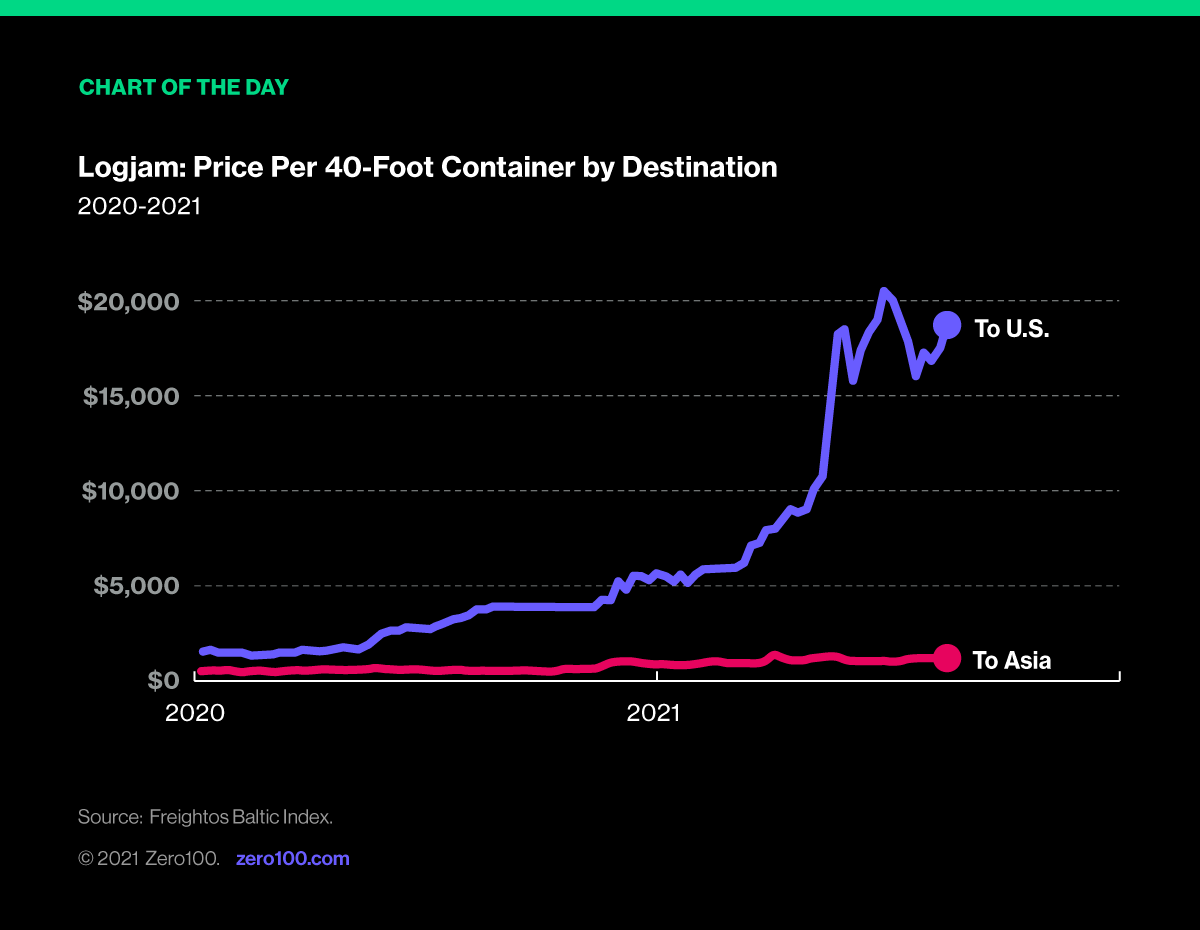
Infrastructure Spending vs. Structural Failures
In the wake of major new spending on U.S. infrastructure, we examine the next potential supply chain flashpoint and where capital expenditures will (and will not) address continuing structural issues.
Infrastructure Week: Redux
On Monday, President Biden signed the previously stalled Infrastructure Investment & Jobs Act into law, committing $1.2 trillion in spending over the next five years. While the more pugilistic pundits were quick to move onto the next political clusterf#@k surrounding the larger (and more contentious) Build Back Better Act, the more wonk-ish types began to revisit the actual content of H.R.3684, which weighs in at a mere 1,039 pages.
Overlooking why the United States Congress can't seem to fit more than 200-words onto a single page of legislation, we find the following pork barrel products:
- At DoT, a newly created Office of Multimodal Freight Infrastructure & Policy (that's going to be one helluva acronym...)
- ~$100 billion in discretionary funding via grant programs to address “supply chain efficiencies”
- Examples of which include the Port Infrastructure Development Grant Program ($2.5 billion) designed to: “decarbonize port infrastructure, improve the movement of goods through our nation's ports, and enhance port resiliency.”
That's some . . . disappointing pork.
To put these figures in perspective, the latest estimated cost to modernize a major port terminal is somewhere in the neighborhood of $500M to $1B. In other words, don't expect to see those fully automated container terminals we read about in Qingdao during the Great Rebuilding. Especially since pressure from Labor Unions has already defined “zero-emission port equipment or technology” in the next bill as: “human-operated equipment or human-maintained technology.” (see Pages 307-308).
Looking ahead, the latest International Monetary Fund forecast reviewed by the Congressional Budget Office suggests the continuing “GDP Gap” is forecast to persist through at least 2023, representing $3.6 TRILLION in cumulative lost output (conservatively). In many ways the capital influx represented by the spending bill is arriving a day late and a dollar short. For the first time since the Great Recession, supply deficit indicators across the five major contributors to GDP are blinking red in unison...
Speaking of Pork (or lack thereof)
Eclipsed by the news on Capitol Hill, a critical story is failing to get the traction it deserves. In a rush to address the continuing bottlenecks at ports, move the growing pile-up of imports off the docks and into the waiting hands of consumers, and exit the latest phase of the supply chain crisis—we have ignored the slow-burning export problem.
A sobering profile over the weekend detailed the plight of dairy cooperatives that are experiencing upwards of 60% cancellation rates on outbound bookings that they rely on to move 50 million pounds of raw product to factories in Southeast Asia and Mexico.
At this juncture, the National Milk Producers Federation (NMPF) estimates nearly $1B in higher costs, lost exports, and overall price deterioration (through the first half of 2021 alone). According to the Agriculture Transportation Coalition(AgTC), over a fifth of foreign agricultural sales is effectively being lost.
To add further insult to injury, the pricing differential between inbound vs. outbound containers has grown so extreme (+17x last week) that it is leading to a real economic incentive to move empty containers back to APAC as quickly as possible rather than fill them with spoiling exports. The U.S. is literally exporting . . . air?

Different Crisis, Same Solution
One of the reasons this story is not getting sufficient airtime is that U.S. agriculture is a net exporter of goods. The U.S. has maintained a positive trade surplus for agriculture products for decades, while shipping only a quarter of its overall production abroad (although this varies widely by individual commodity).
In this manner, the industry remains a poster child for the built-in advantages of shorter supply chains and their ability to absorb shocks to the system better than say, the continuing fallout in Detroit from the chip shortage. Business ebbs and flows, future prices on commodities fluctuate, but the system doesn't stop dead in its tracks.
To that end, we see several positive reports from major product companies to turn corporate watchwords (e.g., redundancy, resiliency, and de-risking) into action. Companies ranging from Stanley Black & Deck to Honeywell have already announced accelerated plans to establish compartmentalized regional networks. These nearshoring efforts expected to show tangible return on investment by late 2022 / early 2023.
For more and more companies, the cost of adopting a “wait and see” approach is becoming too high to stomach.
Critical Reading
WASHINGTON POST
As Supply Chains Strain, Some Corporation Rewrite Production Playbook
Commentary: Compelling profile of efforts by Stanley Black & Decker, General Electric, and Honeywell to isolate vulnerabilities, reduce dependencies, and ultimate de-risk their supply chain.
#derisk #nearshoring
SUPPLY CHAIN DRIVE
Wayfair Logistics Service Fuels Capacity Growth, Strengthens Carrier Relations
Commentary: Wayfair joins the ranks of Amazon, JD.com, and American Eagle at partnering or acquiring end-to-end logistics networks to ensure last-mile delivery operations cover >70% of U.S. large parcel deliveries.
#innovation #logistics
THE NEW YORK TIMES
Crunch at Ports May Mean Crisis for American Farms
Commentary: The only thing worse than reading about the port congestion and the import crisis is reading about the scale of the next crisis on the horizon: farm exports.
#foodsupply #exportcrisis